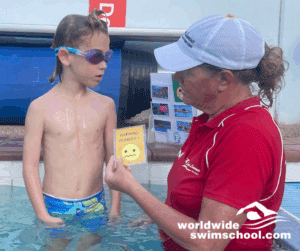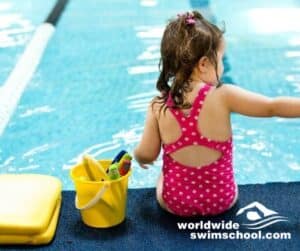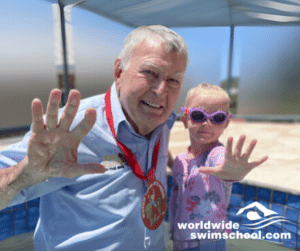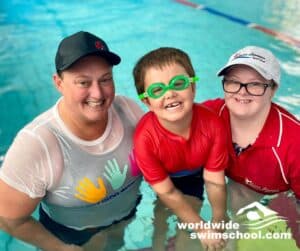From the age of 4, children start to gain control over their fine motor skills. Therefore, Laurie believes that we need to instill in children good neuromuscular patterns from their very first Learn to Swim lesson. In addition, even in the under 4 year swimming program, parents are encouraged to manipulate their children’s legs up and down in a fast little kicking action.
As a result, when children progress to lessons without their parent, they should know the straight leg, little fast kicking action required for propulsion. Importantly, if we let children perform the incorrect kicking or arm action, then their brain is hardwired to continue with that pattern. This muscle memory is very hard to break the older children become. For this reason, Laurie prefers that children swim short distances with good technique instead of long distances with poor technique.
Learn to Swim Teachers
The majority of international experts are either Learn to Swim teachers or swimming coaches. In fact, very few have the experience and insight across all swimming levels from babies to Olympians. Laurie's outstanding achievements saw him inducted into the International Swimming Hall of Fame in 1996 to recognise his efforts. In addition, he has been honoured by the International Swimming Hall of Fame for achievements in coaching and infant Aquatics.
When he remembers his success as a coach, Laurie's fondest achievements always centre on those in his role as a Learn to Swim teacher. Therefore, Laurie has a recipe for success and has identified certain Learn to Swim principles which will progress raw beginners to efficient quality swimmers. In addition, World Wide Swim School platform has been specifically designed to share these techniques that represent more than 40 years of successful swimming teaching and coaching.
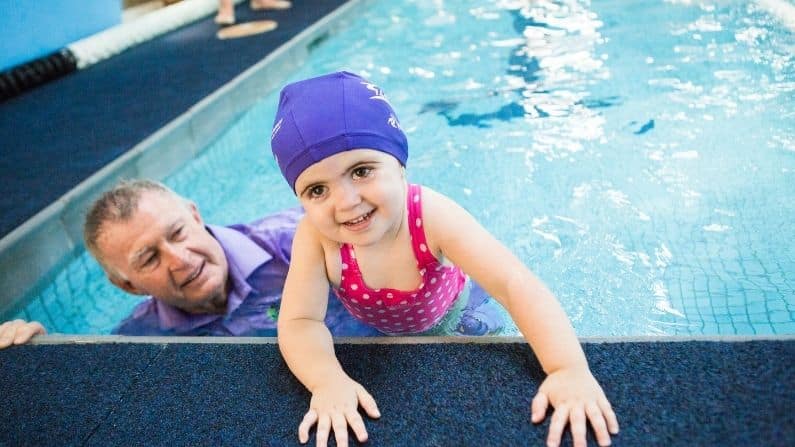
Floating as a Foundation
Because of his passion for water safety, these important safety skills underpin the entire learn-to-swim process. Similarly, particular emphasis is put on floating as a foundation and a safety skill. Therefore, floating becomes the basis of all learn-to-swim and the foundation from which each stroke should be taught. As a result, once children relax with water familiarisation activities, establish breath control, progress through submersions and master that fun floating sensation they become very comfortable. In other words, the more they are exposed to water in play situations the more at home in the water they become. In conclusion, don’t underestimate the importance of water play.
Laurie follows the basic teaching progressions of:
- Water familiarisation
- Breath control
- Submersion
- Floating
- Propulsion
- Learning to breathe
Laurie’s learn-to-swim principles follow a progressive building block approach. Developing quality skills is the focus. Progressions do not occur until the prerequisite skill is mastered
Water familiarisation
The elements in the Learn to Swim process in regards to water familiarisation include factors such as:
- Teach children in water where they can stand
- Avoid over handling frightened beginners
- If you are assisting children make sure you have a soft touch so they can feel the buoyancy of the water
- Establish routines for entering and exiting the water
- Develop confidence with games, positive praise and enthusiasm
- Build and maintain trust with timid children
- Slowly introduce deep water activities like monkeys on the pools edges and even there have the children explore buoyancy
- Encourage independence by allowing children to do things for themselves
- Educate parents and children about the importance of water safety
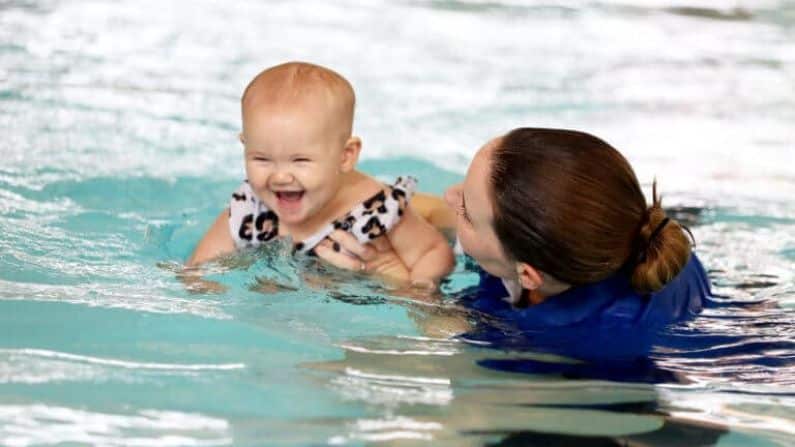
Breath Control
The elements in the Learn to Swim process in regards to breath control include factors such as:
- Never force or hold a child’s head underwater
- Children must learn to hold their breath before bubbles are taught
- Children can easily sniff water up the nose or drink the water if they don’t know how to hold their breath
- Use demonstrations to show children how to hold their breath
- Ensure eyes and ears are under the water
- Encourage children to put their face underwater by using, imaginative play, games and positive praise
- Build breath control up to ten seconds
- Ensure children are comfortable submerging the face without using goggles
Submersion
The elements in the Learn to Swim process in regards to submersion include factors such as:
- Never force or hold children underwater
- First submersions must be performed voluntarily
- Initial submersions are best done holding on to the teachers hands, pools edge or a kick board
- Use games like ring a Rosie, picking up rings or ducking under lane ropes to encourage submersions
- Teach children to recover to a standing position
- Start in shallow water and then transition to deep water
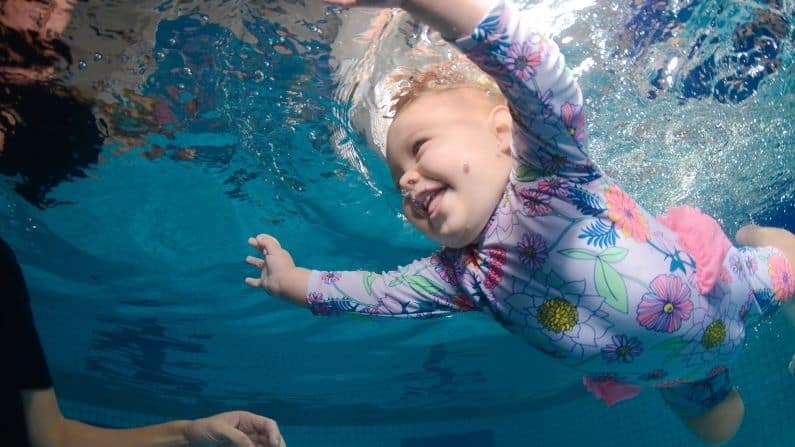
Floating
The elements in the Learn to Swim process in regards to floating include factors such as:
- Use a kickboard to assist first back and front floating attempts
- Kick boards help to establish balance
- First unassisted front floats should be performed to a ledge or pools edge
- Children feel more comfortable floating to solid objects that won’t move
- Front floating with arms outstretched will be more balanced initially
- Gradually work towards a streamline position
- Eyes and ears in first, then push feet off the bottom for front floats
- Use a shallow water ledge during initial back floats
- Slowly encourage children into deeper water
- Teach children to sit up from a back floating position
- Stiffness, cold or nervous shaking, and build of a person will affect floating
- Establish front and back floating for 10 seconds
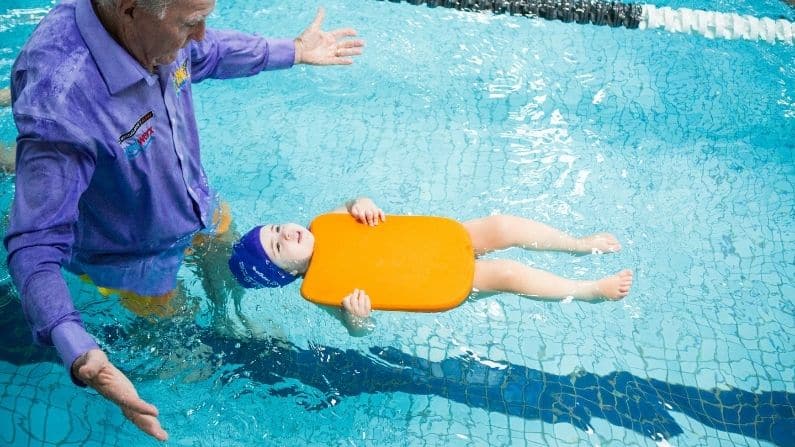
Propulsion
The elements in the Learn to Swim process in regards to propulsion include factors such as:
- Use short distances to develop great propulsive skills
- Shallow ledge kicking is ideal to encourage the correct kicking action because it restricts the depth of the kick
- Establish a perfect a streamline position for efficient future swimming (arms behind the ears, chin on chest)
- Backstroke kicking keep knees and feet underwater
- Develop a 6 beat kicking action for freestyle and backstroke
- Teach correct entry and exit position
- Develop the catch or pull and the accelerated push action back to the leg
- Demonstrate a relaxed arm recovery and have children practice
- Use simple instructions, repeated practice and demonstrations of good technique with beginners
Join our community and keep up to date with new articles, special offers - it is free to join!
Looking for more information on learning how to swim - don't go past the Swim Library.


